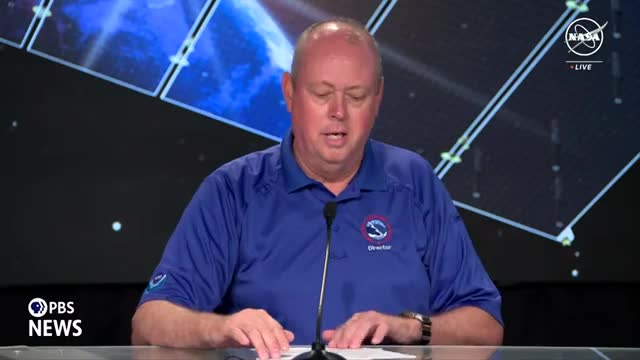GOES U satellite launch revolutionizes space weather forecasting

This article was created by AI summarizing key points discussed. AI makes mistakes, so for full details and context, please refer to the video of the full meeting. Please report any errors so we can fix them. Report an error »

In a recent government meeting, officials highlighted the critical advancements in weather and space observation technologies, particularly focusing on the upcoming launch of the GOES U satellite. This satellite is set to enhance meteorological capabilities significantly, providing real-time data crucial for public safety during severe weather events.
The meeting featured discussions on the GOES (Geostationary Operational Environmental Satellites) advanced baseline imager (ABI), which has proven invaluable in monitoring rapidly developing weather phenomena. Notably, the ABI played a key role in tracking a powerful derecho that struck Houston on May 16, producing winds of up to 100 miles per hour and extensive damage. Meteorologists utilized GOES data to issue timely severe thunderstorm and tornado warnings, ensuring residents received critical information even during nighttime hours.
Additionally, the meeting addressed the satellite's role in wildfire monitoring. The ABI's ability to differentiate between cloud droplets and smoke particles was particularly beneficial during the unprecedented smoke events from Canadian wildfires in June 2023. This capability aids in proactive decision-making for wildfire management.
Space weather forecasting was another focal point, with officials discussing the importance of monitoring solar activity. The GOES U satellite will introduce the first operational coronagraph, which will provide continuous observations of the sun's corona, significantly improving the prediction of geomagnetic storms. These storms can disrupt power grids, communication systems, and navigation, making timely alerts essential for infrastructure protection.
The meeting underscored the importance of these advancements in the context of increasing reliance on technology for safety and emergency response. As space weather events become more relevant to national security and economic stability, the GOES U satellite is poised to enhance the nation's preparedness and resilience against such challenges.
Overall, the discussions reflected a commitment to leveraging cutting-edge technology to safeguard public safety and infrastructure in the face of evolving environmental threats.
The meeting featured discussions on the GOES (Geostationary Operational Environmental Satellites) advanced baseline imager (ABI), which has proven invaluable in monitoring rapidly developing weather phenomena. Notably, the ABI played a key role in tracking a powerful derecho that struck Houston on May 16, producing winds of up to 100 miles per hour and extensive damage. Meteorologists utilized GOES data to issue timely severe thunderstorm and tornado warnings, ensuring residents received critical information even during nighttime hours.
Additionally, the meeting addressed the satellite's role in wildfire monitoring. The ABI's ability to differentiate between cloud droplets and smoke particles was particularly beneficial during the unprecedented smoke events from Canadian wildfires in June 2023. This capability aids in proactive decision-making for wildfire management.
Space weather forecasting was another focal point, with officials discussing the importance of monitoring solar activity. The GOES U satellite will introduce the first operational coronagraph, which will provide continuous observations of the sun's corona, significantly improving the prediction of geomagnetic storms. These storms can disrupt power grids, communication systems, and navigation, making timely alerts essential for infrastructure protection.
The meeting underscored the importance of these advancements in the context of increasing reliance on technology for safety and emergency response. As space weather events become more relevant to national security and economic stability, the GOES U satellite is poised to enhance the nation's preparedness and resilience against such challenges.
Overall, the discussions reflected a commitment to leveraging cutting-edge technology to safeguard public safety and infrastructure in the face of evolving environmental threats.
View full meeting
This article is based on a recent meeting—watch the full video and explore the complete transcript for deeper insights into the discussion.
View full meeting